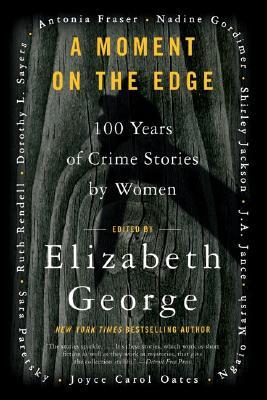☺☺☺☺☺
Mysteries are my go to books. They
have been part of my life for as long as I can remember, starting with
Encyclopedia Brown. I have always loved reading them, both as novels and short
stories. However, almost all of the books I read are by male writers. I have
visited the worlds of a few women mystery writers, and Sara Paretsky is one of
my favorites, but I have never read a lot of their work. So, when my wife told
me about this collection of short mysteries, I was intrigued.
Edited by Elizabeth George, the
creator of the aristocratic Inspector Lyndley, one of wife’s favorite
detectives, the book presents a comprehensive overview of history of mysteries
written by female writers. Her choices range from women who are well known,
such as Dorothy Sayers, Ruth Rendell and Joyce Carol Oates, to some lesser
known writers including Lia Matera and Minette Walters. All are excellent, and
they provide a wide variety of examples of the mystery genre.
One of my favorite stories is A Jury of Her Peers by Susan Glaspell. A
writer of fiction and plays, Ms. Glaspell (1876-1948) was a member of the
Provincetown Players. A Jury takes
place out on the plains. The story revolves around the women of a small town
and how they react when the husband of one is found, hanged, in his home.
In Murder-Two, Joyce Carol Oates (b. 1938) presents a deep and dark
look at the psychology of a young man whose mother has been found murdered. The
tale is told through the eyes of his lawyer, a self-assured young lady, who
quickly forms doubts about her client and herself.
It is no real surprise that my
favorite story comes from my favorite author in the collection – Sara Paretsky
(b. 1947). In The Case of the Pietro
Andromache, she takes to the short story form and still presents her
detective – V.I. Warshawski, with her usual mix of social class awareness,
politics and, in this case, she even throws in art history and holocaust for
good measure. She does all of this without losing the thread of the mystery or
the interest of the reader.
If you love mysteries, especially
short ones, and you want to expand your knowledge of women writers, pick up A Moment on the Edge. It is an excellent
collection.


